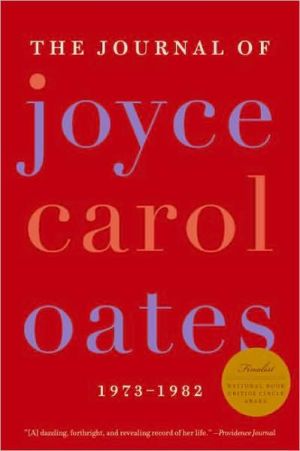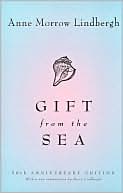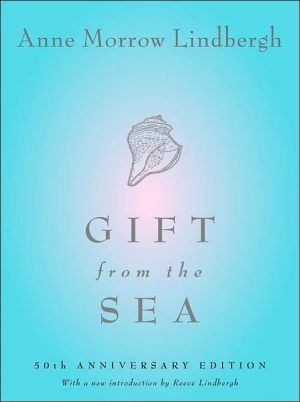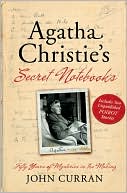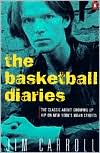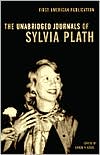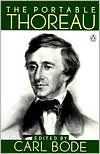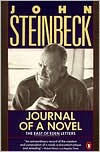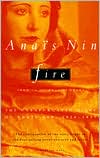The Journal of Joyce Carol Oates: 1973-1982
The Journal of Joyce Carol Oates, edited by Greg Johnson, offers a rare glimpse into the private thoughts of this extraordinary writer, focusing on excerpts written during one of the most productive decades of Oates's long career. Far more than just a daily account of a writer's writing life, these intimate, unrevised pages candidly explore her friendship with other writers, including John Updike, Donald Barthelme, Susan Sontag, Gail Godwin, and Philip Roth. It presents a fascinating portrait...
Search in google:
The Journal of Joyce Carol Oates, edited by Greg Johnson, offers a rare glimpse into the private thoughts of this extraordinary writer, focusing on excerpts written during one of the most productive decades of Oates's long career. Far more than just a daily account of a writer's writing life, these intimate, unrevised pages candidly explore her friendship with other writers, including John Updike, Donald Barthelme, Susan Sontag, Gail Godwin, and Philip Roth. It presents a fascinating portrait of the artist as a young woman, fully engaged with her world and her culture, on her way to becoming one of the most respected, honored, discussed, and controversial figures in American letters. The Barnes & Noble Review On April 3, 1975, Joyce Carol Oates spotted a small mention of herself in a New York Times article on women "workaholics." She was dismayed to note that the writer failed to mention that, in addition to her writing, Oates also taught at the university. She protests in her journal: "But that's half my life!...maybe more than half. If I had nothing to do but write, I would write constantly and would be what is known as 'prolific.' Which of course, I wouldn't want."
The Journal of Joyce Carol Oates\ 1973-1982 \ Chapter One\ 1973\ A journal as an experiment in consciousness. An attempt to record not just the external world, and not just the vagrant, fugitive, ephemeral "thoughts" that brush against us like gnats, but the refractory and inviolable authenticity of daily life: daily-ness, day-ness, day-lightness, the day's eye of experience.\ \ \ \ When Joyce Carol Oates began her journal on New Year's Day, 1973, she was at the height of her early fame. Only weeks before, she had been featured in a cover story for Newsweek magazine, and after the appearance of her National Book Award-winning novel them (1969) and countless award-winning short stories, she had become one of the most widely discussed and controversial authors in the country, alternately praised and criticized for her violent themes, her turbulent artistic vision, and her immense productivity.\ Her journal entries for this year, however, evince little regard for fame or the other trappings of literary celebrity. Instead, they show her sharp focus on the inner life, especially in the wake of a brief mystical experience she'd had in London in December of 1970, in which she had seemed to "transcend" her physical being. This crucial event in her life caused her to meditate on mysticism in general, to seek out writings on the subject, to visit the Esalen Institute and the Tassajara Zen Mountain Center in California, and even to consider writing a "mystical novel." During this year she is immediately concerned, however, with recording her work on new stories and on her novel in progress, HowLucien Florey Died, and Was Born; and with discussing her dreams, her reading, her travels, and her teaching.\ This typically productive year was shadowed by the hostility shown toward Oates by a Detroit resident, here known as "A.K.," who remained angry over Oates's refusal to rig a positive review of his first novel in an influential publication; he even resorted to "stalking" her at the annual Modern Language Association convention at the end of the year. She was also troubled by the recurrence of a lifelong physical problem, a heart condition known as tachycardia. Even these negatives, however, provided opportunities for Oates to consider philosophical and personal patterns in her life experience by which she learned and grew.\ At this time, Oates was living with her husband, the critic and editor Raymond J. Smith, in Windsor, Ontario, where she and he had been professors of English since 1968. Their riverside home was, according to Smith, "a highly romantic setting," and in her journal Oates often took note of her natural surroundings and of the ceaselessly flowing river as an emblem of human experience. . . .\ January 1, 1973. . . . The uncanny calm of freezing, layered skies. Clouds opaque and twisted like muscles. Idyllic on the river, "unreal." On this New Year's Day I am thinking of another winter, three years ago, in London, when my life—the "field" of perceptions and memories that constitutes "Joyce Carol Oates"—was funneled most violently into a point: dense, unbearable, gravity like Jupiter's. Another second and I would have been destroyed. But another second—and it was over. . . . Query: Does the individual exist? What is the essential, necessary quality of (sheer) existence. . . . \ [ . . . ]\ A journal as an experiment in consciousness. An attempt to record not just the external world, and not just the vagrant, fugitive, ephemeral "thoughts" that brush against us like gnats, but the refractory and inviolable authenticity of daily life: daily-ness, day-ness, day-lightness, the day's eye of experience.\ The challenge: to record without falsification, without understatement or "drama," the extraordinarily subtle processes by which the real is made more intensely real through language. Which is to say, through art. To ceaselessly analyze the "consciousness" I inhabit, which is inhabited as easily and gracefully as a snake in its remarkable skin . . . and as unself-consciously. "My heart laid bare." The stern rigors of a confessional that is always in session but can promise no absolution.\ "The only happiness lies in reason," says Nietzsche. "The highest reason, however, I see in the work of the artist, and he may experience it as such. . . . Happiness lies in the swiftness of feeling and thinking: all the rest of the world is slow, gradual, and stupid. Whoever could feel the course of a light ray would be very happy, for it is very swift . . ."\ Nietzsche's loneliness. Stoicism; and then frenzy. (Doesn't stoicism lead to frenzy, in the end?) To aspire to Nietzsche's aloneness in the midst of love, marriage, family, and community. A feat not even Nietzsche himself could have accomplished.\ The advantage of creating a personality, a meta-personality. The constant witness who refuses to be comforted—or deluded. Sharing in the emotions. Imposture. The sense of masquerade, carnival. Life as "Eternal Delight." (As I write this the sun appears—ghastly in the stony sky.) Detachment a trick of the nerves. Possibly a curse. The obvious disadvantage: the meta-personality takes on a life of its own, cerebral and cunning, contemptuous of the original self. Or: the meta-personality evolves into a curious tissue of words, "transcendent" while having no genuine existence at all.\ Dreams last night of unusual violence. Premonitions . . . ? Preparations for the New Year . . . ? Woke exhausted, alarmed. The passivity of sleep is an affront.\ [ . . . ]\ Mimicry of death. Dying-out of consciousness. A friend saying, with an anxious smile, that he feared falling asleep, in a way—the extinction of personality. I thought, but did not say: Perhaps it's personality that then comes alive.\ Tentative plans for John Martin at Black Sparrow Press to do The Poisoned Kiss, unless Vanguard objects. 1 John Martin's lovely books. . . . It would be appropriate for the Fernandes stories, which leapt out of the "left-hand" side of my personality, to be published by Black Sparrow on the West Coast, and not Vanguard in New York City.\ My optimism today can't quite overcome the memory of those draining, bewildering dreams. The irony: one can experience in sleep tortures that, in ordinary consciousness, would be profoundly traumatic. And yet one isn't expected to take them seriously. . . . Madness, no doubt, begins in dreams. And spreads, and spreads, like oil in water.\ The Journal of Joyce Carol Oates\ 1973-1982. Copyright © by Joyce Oates. Reprinted by permission of HarperCollins Publishers, Inc. All rights reserved. Available now wherever books are sold.
\ Publishers WeeklyWriting is... a drug, sweet, irresistible, and exhausting," writes Oates in this fascinating and significant record of an artist's life. She was 34 when she began this "experiment in consciousness," which follows the gestation and writing of many of her most important works. Oates, readers come to realize, is intensely disciplined, exquisitely sensitive, unflaggingly-almost morbidly-introspective, concerned with philosophical issues, attuned to mysticism and acutely responsive to the natural world. Although she abhors being described as prolific, she writes daily, with feverish energy; she herself uses the word "obsessed." If a day or two passes when she isn't writing, she feels "profound worthlessness." Teaching, she reveals, is a vital component of her well-being, although it often leaves her exhausted. The journal records her relationships with contemporary authors, including Philip Roth, Susan Sontag, John Updike, Gail Godwin, Stanley Elkin, John Gardner and Donald Barthelme. She is candid about her "intensely" intimate marriage to Raymond Smith, her lack of maternal instinct and the hours she spends at the piano, an obsession almost equal to her writing. Overall, this journal immerses the reader in a complex, searching, imaginative personality-an artist who continues to refine her search for literary expression. 16 pages of b&w photos. (Oct. 2)\ Copyright 2007 Reed Business Information\ \ \ \ \ Kirkus ReviewsTensions between public image and private self are engagingly acknowledged and analyzed in illuminating excerpts from journals begun during the second decade of this prolific author's remarkable career. Their emphases are predictable: the flood of writing Oates produced then and now (The Museum of Dr. Moses: Tales of Mystery and Suspense, 2007, etc.); speculations about the nature of the artistic process and the ways in which art has shaped her character and personality; family, friends and colleagues whose empathy and affection anchor her in a vividly experienced, evidently cherished everyday world. Readers who perceive Oates as a workaholic automaton may be surprised to encounter an author who, though formidably successful even this early in her career, felt unworthy of the acclaim lavished on her. Oates waxes rhapsodic about the sustaining pleasures of marriage (to her colleague and soul mate Raymond Smith), domestic routine (she's a conscientious if unadventurous cook and hostess), her teaching duties and burgeoning friendships with such notable contemporaries as John Updike, Gail Godwin, the late John Gardner and Susan Sontag, Anne Tyler, even the eternally prickly Norman Mailer. It's nice to know that she derives so much pleasure from teaching Alice in Wonderland to her Princeton students and from the experience of playing the piano and listening to her beloved Chopin. Naturally, she also chronicles her work: stories, poems, essays and reviews completed almost daily (or so it seems); wearying searches for appropriate form and rhetoric for the ambitious novels (The Assassins, Son of the Morning and Angel of Light) that many critics consider her weakest work; and a somewhat surprisingcommitment to reviving traditional narrative genres in her Gothic Quintet, which includes Bellefleur, A Bloodsmoor Romance and The Crosswicks Horror, the last-named long since completed but as yet unpublished. "Love. Friendship. Art. Work. These are my values," Oates says. Watching her juggle them in these replete pages is a stimulating experience.\ \ \ The Barnes & Noble ReviewOn April 3, 1975, Joyce Carol Oates spotted a small mention of herself in a New York Times article on women "workaholics." She was dismayed to note that the writer failed to mention that, in addition to her writing, Oates also taught at the university. She protests in her journal: "But that's half my life!...maybe more than half. If I had nothing to do but write, I would write constantly and would be what is known as 'prolific.' Which of course, I wouldn't want."\ It's probably safe to say the writer is being ironic. More than three decades later, if you Google the phrases "Joyce Carol Oates" and "prolific" the search engine will return 46,900 entries.\ When the author began to keep a journal on New Year's Eve, 1973, at 34 years old, she certainly had some inkling that at least one purpose would be to preserve her thoughts for posterity. At that time, she had published six novels (one of which, them, was the winner of a National Book Award), four short story collections, three books of poetry, and one book of criticism. Ten years later -- the end date of the first volume of her collected journals, released this week -- she had written by my calculation eight novels, nine short story collections, one novella, three books of poetry, four plays, and three books of essays and criticism.\ What to do with these thoughts, culled by editor Gregory Johnson from more than 4,000 single-spaced typewritten pages now housed in the Syracuse University Library, is an open question. (The author herself preferred not to re-read her work before publication. In her introduction, she writes: "[R]evisiting the past is like biting into a sandwich in which, you've been assured, there are only a few, really a very few, pieces of broken glass.") With any other writer of Oates's admittedly high caliber -- and despite her uneven output, much of her work is strong enough to merit her often-mentioned presence on the shortlist of contenders for the Nobel Prize -- it would be relatively simple to map the author's private thoughts alongside the work produced during the time period, and deliver a tidy thesis on how each informed the other. In this case, that's work best left to a grad student willing to spend more than a dozen years ABD. (One exasperated critic, Chauncey Mabe, from the South Florida Sentinel, threw up his hands and substituted a "to-do" list for Ms. Oates in lieu of a review).\ Nor is this diary of much use for someone looking for salacious literary gossip. Invoking journal writers, such as Sylvia Plath, who "use their writing skills as scalpels to cruelly cut up anyone who comes into their paths" Oates refuses to use her journal as an instrument to vilify others. "If the reader is looking for 'cruel' -- 'malicious' -- 'wickedly funny' portraits of contemporaries, he/she is not likely to find them here." The cast of distinguished literary characters who meander through the journal is staggering: A partial list includes John Updike, Donald Barthelme, John Barth, Joan Didion, Elizabeth Hardwick, Anne Tyler, Philip Roth, and Anne Sexton. But Oates's good manners keep most of these portraits perfunctory at best. Often, she's simply too shy or socially disengaged to interact at all: She chastises herself several times for failing to call Lillian Hellman, and, when told by Donald Barthelme in 1976 that she "would like" Susan Sontag, she thinks, "No doubt, but she wouldn't like me!" (When the two women finally meet in 1979, they become good friends and bond, among other things, over Sontag's experience with cancer and Oates's tachycardia, a lifelong heart problem.)\ In fact, the subject most dissected and lacerated by the journal writer's scalpel is "Joyce Carol Oates" or "JCO," a "persona," most often referred to in the third person, whom the journal writer -- however she cares to refer to herself -- tends to observe from a considerable distance, with a mixture of bemusement, frustration, skepticism, and incomprehension.\ On reading the galleys of her manuscript The Triumph of the Spider Monkey, she writes that she is not sure what to make of the novella "whether it's inspired or simply awful...outrageous...a little crazy. I don't think I would care to meet the author." When looking at a list of publications on the author's page of the 1979 Franklin Library edition of them, she is flabbergasted. "The list of books is overwhelming! So many books! So many! Obviously, JCO has a full career behind her, if one chooses to look at it that way; many more titles and she may as well...what?..give up all hopes for a 'reputation'?" And when asked by a friend, the critic John Gardner, to write a family novel in which things go well for a change, she replies, " 'I,' Joyce Smith, Joyce who is his friend, Joyce the conscious being, would gladly write such a novel for the edification of all; but unfortunately, that self does not handle the writing and will accept no assignments."\ All this literary shadowboxing makes the relationship between the self who does handle the writing, and the private person who writes the journals, the "conscious" person who attends dinner parties with John Gardner, murky at best. (At times, she even suggests that stories are literally the product of her unconscious self: a weeping teenage girl appears in one dream and later becomes a character in her short story "Honeybit"; and her characters Jack and Elena from Do With Me What You Will appear in a dream to argue for their right to a more peaceful ending.)\ Oddly enough, the private person is frequently referred to by her married name, Joyce Smith, which may -- or very well may not -- suggest that "Joyce Carol Oates" finds her dark material in the past, whereas "Joyce Smith" is the woman who survived that past and became a different person upon her marriage, at age 22, to Ray Smith. Indeed, the portions of the journal devoted to her marriage, her teaching, and her daily life are consistently positive, even idyllic. Again and again, she describes waking early, writing until 1:30 or 2:00 (at which point she eats an apple and drinks tea, seemingly her only daytime sustenance), taking long walks and bicycle rides with Ray, the thrill of teaching young students (which doesn't seem to interfere with her output at all) and sitting down to dinner, usually something meaty for her husband and a lighter dish for herself. "We get along so well, it's like a honeymoon," she writes of her husband. "One wonders if such good fortune can last." Still, she despairs of the "very real difficulty of suggesting a good marriage in fiction" and at one point actually denies a similar union to her character Marya Knauer. ("I can't have her meeting and marrying someone like Ray...I can't hand her over to that 'happy' resolution, which would end, in a sense, her struggle as Marya.")\ But if "Joyce Carol Oates" draws upon at least some memories of childhood trauma while living in rural poverty in upstate New York to inform her dark, often violent work, she is loath to admit a biographical connection. Although several passages allude to witnessing the consequences of violence outside her home, her memories of her parents and immediate family are as warm as her feelings for her husband. This fa?ade slips a bit when she recounts an episode when her parents, now bursting with good health, come for a visit. Over dinner at the house of a wealthy friend, Joyce's father tells a "comic-grotesque" anecdote about the difficulty of raising pigs, which ends with him slaughtering the pigs, only to see the meat rot:\ I know, however, that the situation wasn't funny. He tried to raise pigs because we were poor. It was poverty behind the desperation and...it was a sort of tragedy that, after all the humiliating effort, the meat rotted. How interesting it is, then, that thirty or more years later the incident can be retold, perhaps even re-imagined, as an anecdote. A story. A story meant to amuse. For now, their lives have changed considerably -- completely. There's no danger of the repetition of the poverty of decades ago, or the fear and bitterness that attended it. So, sitting in the elegant living room of a $200,000 home in Birmingham, Michigan, telling his story to a vice president of one of the most wealthy of contemporary companies...he can be, in a way, elegant himself: a storyteller confident of his audience and of his own ability (which turns out to be considerable) to entertain. I think this is profoundly, profoundly interesting, and enigmatic only to me...\ His daughter, equally confident as a storyteller, would have no doubt cast the same story as a tragedy. But it's profoundly interesting to note that this last summer, almost exactly thirty years after that conversation in the wealthy friends' living room, Oates published The Gravedigger's Daughter, a novel based in part on re-imagining the life of her paternal grandmother. The protagonist, Rebecca Schwart, is born into poverty, survives a violent marriage, and reinvents herself. At the end, Rebecca ends up happily married to a good man, a man that the author -- in interviews with me and others -- conceded had much in common with her own husband, Ray Smith. For that, we presume "Joyce Carol Oates" has Joyce Smith -- or whomever that person behind the persona is -- to thank. --Amy Benfer\ Amy Benfer has worked as an editor and staff writer at Salon, Legal Affairs, and Paper magazine. Her reviews and features on books have appeared in Salon, The San Francisco Chronicle Book Review, The Believer, Kirkus, and The New York Times Book Review.\ \ \
